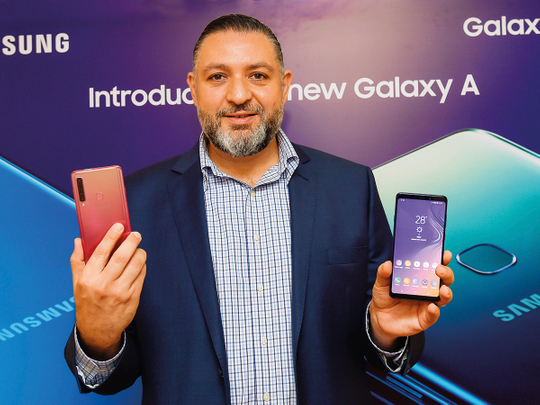
Dubai: Ever asked yourself how many cameras a smartphone needs? And whether would they improve your photography skills?
If you thought one, then you are either caught up in a time warp, probably sticking to your old device which has seen better days, or you have no interest whatsoever in all things technology.
The latest devices pack quite a punch when it comes to cameras and it’s not just resolution... as far as this camera game goes, the more the merrier.
Huawei was the first manufacturer to launch a device with three rear cameras on its P20 Pro, with LG following suit with the LG V40 and Samsung with the A7.
Samsung went one better on Monday, launching the Galaxy A9, the world’s first smartphone featuring four rear cameras. The device is targeted at millennials.
There are also rumours that HMD Nokia will showcase a device with five rear cameras in Dubai on December 5, while Light, the start-up that rolled out a point-and-shoot camera featuring a staggering 16 lenses, is planning to launch a smartphone with nine cameras later this year.
Tarek Sabbagh, head of IT and the Mobile Division at Samsung Gulf Electronics, told Gulf News that there is definitely a target segment for Samsung’s A9 and this is the Instagram generation — millennials who love sharing moments and memories instantly.
“Is it [four cameras] the most important segment for masses? I am not sure but there is a segment — millennials — that cannot be ignored. The smartphone has become so much more than just a phone to them,” he said.
Noting that millennials take more than one billion pictures daily across the world, Sabbagh said travel content was the number one Instagram theme.
He cited recent reports revealing that 31 per cent of travellers were buying extra lenses to help their smartphones capture wide-angle and telephoto shots.
“The amount of people that share travelling content, especially in this part of the world, is very high. [The] camera and messaging are the most important features people are using on smartphones,” he said.
But aren’t four cameras pushing it? Well, at least one analyst thinks so.
“I do not think that people need four cameras on a smartphone. Unless the four cameras deliver a rich experience that was not available before, then yes. Otherwise, no,” said Roberta Cozza, research director at Gartner.
“The improvements we are seeing right now are only incremental. It will take a couple of years until we see artificial intelligence making the most of all these technologies.”
Cozza, however, noted that there was still scope for improvement in low-light photography. She expects most vendors to launch at least one premium device featuring three rear cameras next year.
Samsung A9 specs
The 6.3-inch A9 has a 24 megapixel (MP) autofocus primary sensor with an f/1.7 aperture, a 10 MP telephoto lens with 2x optical zoom and an f/2.4 aperture, an 8MP sensor with an ultra-wide 120-degree lens with an f/2.4 aperture and a 5MP for depth sensor with an f/2.2 aperture. The front camera is 24MP with an f/2.0 aperture. The device is priced at Dh2,149.










